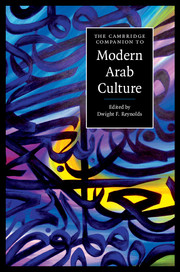Chapter 15: Migration and diaspora
Alfaro-Velcamp, Theresa. So Far from Allah, So Close to Mexico: Middle Eastern Immigrants in Modern Mexico. Austin, TX: University of Texas, 2007.
Brand, Laurie A.Citizens Abroad: Emigration and the State in the Middle East and North Africa. Cambridge University Press, 2006.
Bunt, Gary R.iMuslims: Rewiring the House of Islam. Chapel Hill: University of North Carolina Press, 2009.
Civantos, Christina. Between Argentines and Arabs: Argentine Orientalism, Arab Immigrants, and the Writing of Identity. Albany, NY: State University of New York Press, 2006.
Cooke, Miriam, and Lawrence, Bruce B. (eds.). Muslim Networks from Hajj to Hip Hop. Chapel Hill: University of North Carolina Press, 2005.
Hargreaves, Alec G.Immigration and Identity in Beur Fiction: Voices from the North African Community in France. New York and Oxford: Berg, 1991.
Hourani, Albert, and Shehadi, Nadim (eds.). The Lebanese in the World: A Century of Emigration. London: The Centre for Lebanese Studies/I.B. Tauris, 1992.
Karam, John Tofik. Another Arabesque: Syrian-Lebanese Ethnicity in Neoliberal Brazil. Philadelphia: Temple University Press, 2007.
Khater, Akram. Inventing Home: Emigration, Gender, and the Middle Class in Lebanon, 1870–1920. Berkeley/Los Angeles/London: University of California Press, 2001.
Lloyd, Fran. Displacement and Difference: Contemporary Arab Visual Culture in the Diaspora. London: Saffron Books, 2001.
Nashashibi, Salwa Mikdadi. In/Visible: Contemporary Art by Arab American Artists. Dearborn, MI: Arab American National Museum, 2005.
Peleikis, Anja. Lebanese in Motion: Gender and the Making of a Translocal Village. Bielefeld: Transcript, 2003.
Schulz, Helena Lindholm with Hammer, Juliane. The Palestinian Diaspora: Formation of Identities and Politics of Homeland. London and New York: Routledge, 2003.
Shohat, Ella, and Alsultany, Evelyn (eds.). Between the Middle East and the Americas: The Cultural Politics of Diaspora. Ann Arbor: University of Michigan, 2013.



